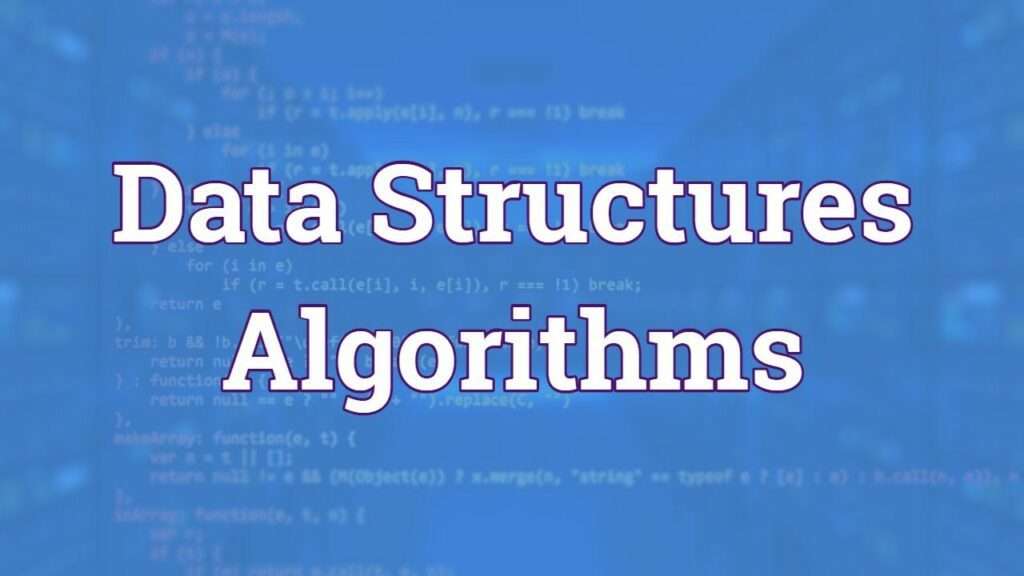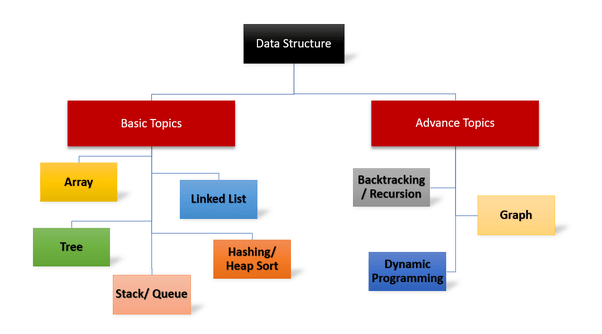Are you brand new to the programming industry? Does “Data Structures and Algorithms” (DSA) make you feel uneasy? Not to worry! In this post, we will deconstruct the DSA’s intricacy into manageable chunks. You’ll have a better idea of what DSA involves and how it serves as the foundation of effective programming at the conclusion of this essay.
Table of Contents
- DSA Full-Form: Introduction to DSA
- DSA Full-Form: Importance of Learning DSA
- DSA Full-Form: Types of Data Structures
- DSA Full-Form: Advanced Types of Data Structures
- DSA Full-Form: How DSA Impacts Real-World Applications
- DSA Full-Form: Overcoming Common Challenges
- DSA Full-Form: Resources to Master DSA
- DSA Full-Form: Exploring DSA in Coding Interviews
- DSA Full-Form: Conclusion
- DSA Full-Form: Frequently Asked Questions(FAQs)
Introduction to DSA
Programming is built on the basis of algorithms and data structures. Data structures are methods for organizing and storing data, whereas algorithms are sequential processes for solving issues. Both concepts are connected because choosing the right data structure in addition to creating effective calculations may have a significant impact on how quickly your code executes.



Importance of Learning DSA
Why should you bother learning DSA? The answer is simple: efficiency. DSA provides tools to manage data effectively, leading to faster execution times and reduced memory consumption. Whether you’re working on a simple app or a complex software system, understanding DSA can lead to elegant and optimized solutions.
Types of Data Structures
(Arrays): A key or an index is used to identify each element in an array. They are crucial and make it simple to retrieve, add, and remove items. The first step towards grasping more sophisticated data structures is understanding arrays.
(Linked Lists): Nodes are the building blocks of linked lists, and each node has information and a connection to the one before it. They can be found in single, double, and circular linked lists, among other types. Linked lists provide effective memory allocation, insertion, and deletion.






Advanced Types of Data Structures
(Stacks): follow the Last-In-First-Out (LIFO) principle, while queues follow the First-In-First-Out (FIFO) principle. They are useful in managing data that requires strict order, such as implementing undo features (stacks) or managing print jobs (queues).
(Trees ): are hierarchical data structures with root nodes and child nodes. They find applications in organizing hierarchical data like file systems and representing hierarchical relationships.
(Graphs ): are a collection of nodes connected by edges. They model relationships between different elements and are essential in various domains, including social networks, maps, and recommendation systems.
Algorithms: The Building Blocks
(Sorting algorithms ): arrange elements in a specific order. Common sorting algorithms include Bubble Sort, Merge Sort, and Quick Sort. Each algorithm has its advantages and best-case scenarios.
(Searching algorithms): find the position or existence of an element within a dataset. Binary Search and Linear Search are widely used for efficient retrieval of information.
(Recursion and Backtracking): Recursion involves solving a problem by breaking it down into smaller instances of the same problem. Backtracking is a technique to solve problems by trying out different possibilities and reverting when necessary.
(Dynamic Programming ): optimizes solutions by breaking them down into smaller subproblems and storing their solutions to avoid redundant calculations. It’s particularly useful for problems with overlapping subproblems.
How DSA Impacts Real-World Applications
From navigating Google Maps to streaming videos on YouTube, DSA plays a crucial role in many everyday applications. Efficient algorithms and data structures ensure quick response times, seamless user experiences, and reduced resource consumption.
Learning DSA: Tips for Beginners
1. Start with Basics: Begin with simpler data structures and algorithms before diving into advanced topics.
2. Practice Regularly: Regular practice enhances understanding and problem-solving skills.
3. Analyze Complexity: Learn to analyze time and space complexity to optimize code.
4. Explore Patterns: Identify recurring patterns in problems and their solutions.
5. Use Online Resources: Leverage online tutorials, courses, and coding platforms to enhance learning.
Overcoming Common Challenges
Learning DSA can be challenging, but persistence pays off. Common hurdles include understanding complex algorithms, choosing the right data structure, and transitioning from theory to practical implementation. Remember, practice and patience are key.
Resources to Master DSA
1. Online coding platforms like LeetCode and HackerRank offer a wide range of DSA problems.
2. Books like “Introduction to Algorithms” by Cormen et al. provide comprehensive insights.
3. YouTube tutorials from educators like Abdul Bari simplify complex concepts.
Exploring DSA in Coding Interviews
Coding interviews often involve DSA questions to assess problem-solving skills. Practicing DSA problems not only enhances your coding abilities but also boosts your confidence during interviews.
Conclusion
Data Structures and Algorithms are the building blocks of efficient programming. By mastering DSA, you’re equipping yourself with the tools to craft elegant, optimized solutions for a wide range of problems. Embrace the learning journey, and soon you’ll be tackling coding challenges with newfound confidence.
DSA - Frequently Asked Questions(FAQs)
Not at all! DSA is essential for programmers of all levels as it improves coding efficiency.
Absolutely! DSA can be learned by anyone with determination and consistent practice.
Yes, DSA skills are crucial for developing efficient and optimized software applications.
The duration varies, but with regular practice, one can become proficient in a few months.
Yes, DSA enhances user experience in applications like social media, navigation, and e-commerce platforms.






